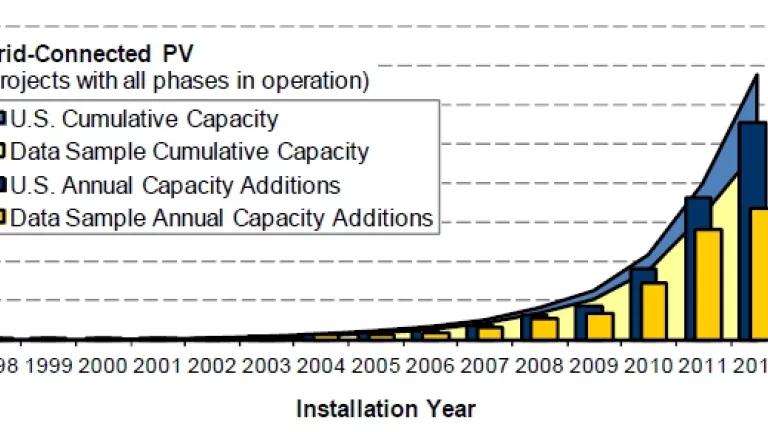
Solar is hot. With a foundation of consistent, long-term deployment policies at both the federal and state levels, solar PV in the U.S. is leading an unparalleled price decline on the strength of enduring high demand from U.S. consumers.
This and many other observations on the state of the solar market and industry in the U.S. can be found in the sixth release of the Dept. of Energy's Lawrence Berkeley National Lab's (LBNL) annual report on the state of the U.S. solar industry, Tracking the Sun VI: An Historical Summary of the Installed Price of Photovoltaics in the United States from 1998 to 2012.
Key takeaways from this year's report include:
- Solar module price declines are the biggest contributor to the overall installed cost drop from 2008 to 2012.
- International comparison of the U.S. to other countries with similarly sized solar portfolios shows that there is substantial room for non-module price declines in the U.S.
- Solar incentive programs at the state level on the whole have performed well: tracking price declines, maintaining project size diversity, and fostering sufficient developer competition.
- However, installed costs of solar still varied greatly from state-to-state, showing that different state-level policy drivers can have a big impact on state and local markets and costs.
Telling the story in 5 figures:
Annual capacity additions of solar PV are accelerating.
California, New Jersey and Arizona still have the largest share of total solar capacity (left pie), but numerous other states are growing their own market share and gaining a larger proportion of the U.S. solar market (right pie).
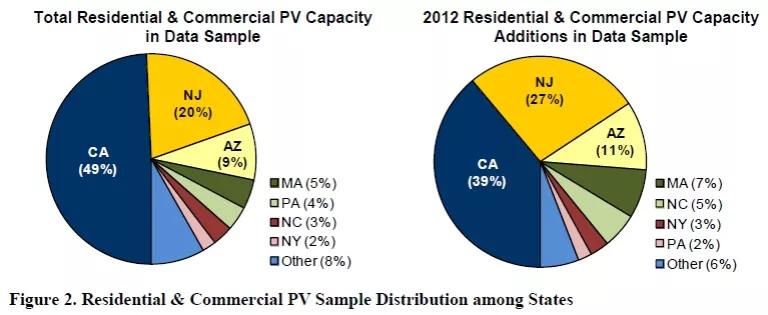
Larger-scale solar projects have become a larger portion of the total installed capacity; however, project size diversity -- from small residential rooftop to large acreage utility-scale solar farms -- remains a core element of U.S. market development.
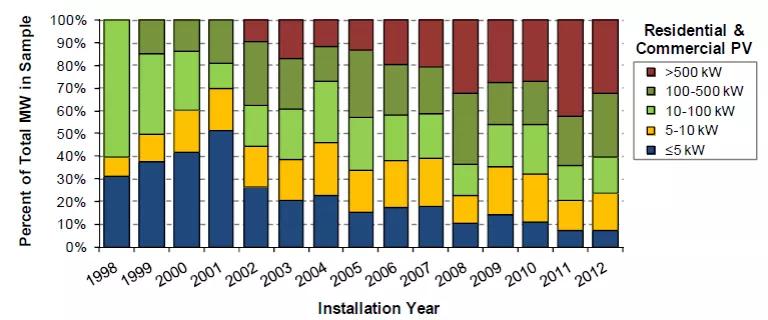
Small-scale solar rooftop installation costs in the U.S. remain higher than a number of other similarly-developed markets in other countries. The authors of the report suggest that there is considerable room for improvement to bring non-module costs down in the U.S. We recently blogged about solutions (focus on simplifying permitting and utility interconnection) here.
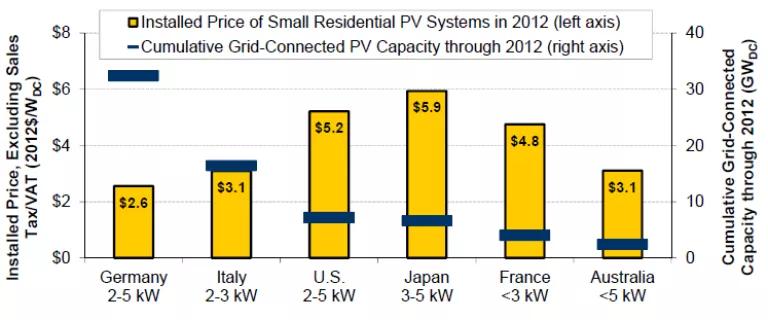
Installed solar prices vary widely among U.S. states. The report authors note that these prices include a number of non-module cost variables such as relative market size and maturity, local labor costs, sales tax, utility retail rates, and administration costs.
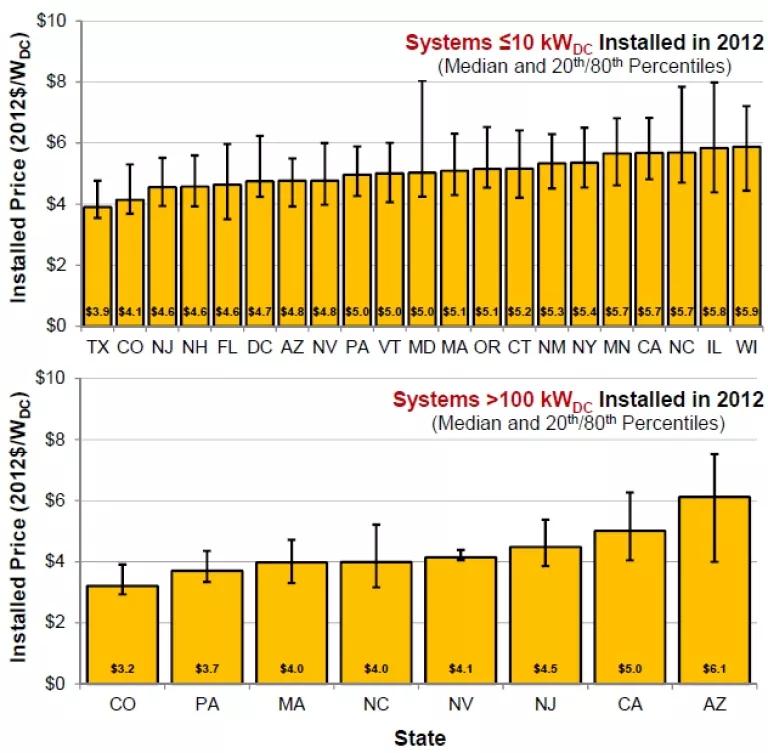
Conclusion
Solar PV was invented by inspired American innovators and entrpreneurs nearly 60 years ago. It represents a positive economic and environmental narrative of the past several years. The solar industry employs nearly 120,000 Americans. Shaped by key deployment policies at both the federal and state levels, solar continues to scale at an accelerated pace to meet burgeoning consumer demand with zero harmful emissions.
